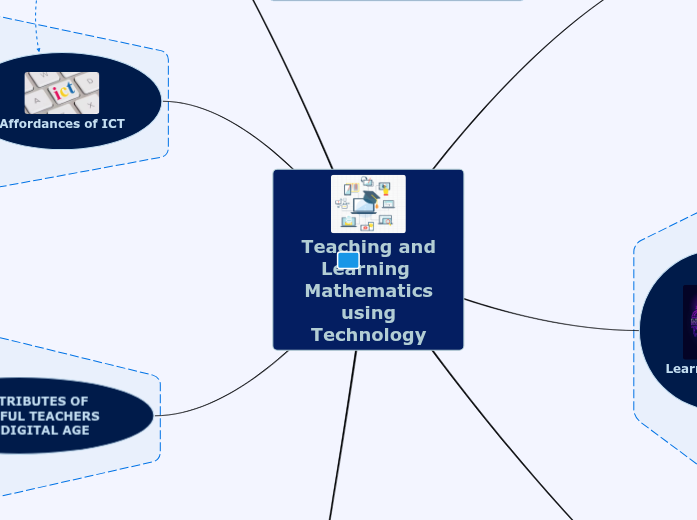Teaching and Learning
Mathematics
using Technology
Learning Theories
Behaviourism
Cognitivism
Constructivism
Humanism
Connectivism
Learning Design
What?
Content
Skills
Reasoning
Why?
Purpose
Context
Future use
How?
Methodology
Technology to use
Software to use
Assessment
Strategies
Pre-assessmnet
Summative
Formative
Reflective
Self assessment
Peer assessment
Feedback type
Best practices from around the world
Singapoer
Dan Finkel
The Role of Technology
in Math Education
Teaching kids real math with computers
Maths class
needs a makeover
OECD - Strong Performers
and Successful Reformers in Education
Finland
Cognitive domains
for
Mathematics
Knowing
Recall
Recognize
Classify
Measure
Compute
Retrieve
Applying
Determine
Represent
Implement
Reasoning
Analyse
Integrate
Evaluate
Draw conclusions
Generalize
Justify
Affordances of ICT
Ubiquitous
Learning Anywhere-Anytime
Active knowledge making
Producing knowledge more powerful than knowledge consuming
Multi-modal meaning
Expanded tools for knowledge representation
Recursive feedback
Digital Socratic dialogical spaces
Collaboration Intelligence
Social networking
Metacognition
Habits of mind
Differentiated learning
Personalised activities
KEY ATTRIBUTES OF SUCCESSFUL TEACHERS IN THE DIGITAL AGE
Don’t use expensive textbooks
Not afraid of technology
Well versed in neuroscience
Learn new tech from a student’s perspective first
Use the curriculum responsibly
Meet the needs of all learners
Concerned with edtech interoperability
Resilient
Multimedia learning
Demonstration
The Geometer's Sketchpad
Investigation
Geogebra
Video-based learning
Paper Video Mathematics
Gaming and Gamification
Collaboration tools
Useful Math Apps
Connecting and Sharing
Teacher tools
